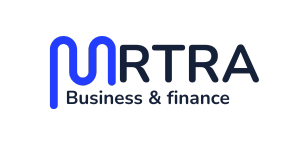Your Guide to factoring accounts receivable financing

Table of Contents
Factoring accounts receivable financing is a key tool for better cash flow. It lets you use the value of unpaid invoices to get funds for daily needs and growth. This is especially helpful when customers pay slowly, creating cash flow gaps.
Knowing how AR factoring companies work can help you make smart financial choices. This knowledge ensures your business does well, even when money is tight.
Key Takeaways
- Factoring accounts receivable financing helps improve cash flow and business operations.
- Unlocks immediate funds from outstanding invoices.
- Essential for businesses facing slow customer payments.
- AR factoring companies offer various receivables financing options.
- Understanding this financing method can shape effective financial strategies.
Understanding Accounts Receivable Financing
Accounts receivable financing helps businesses get cash quickly by turning unpaid invoices into cash. It’s a way to better manage cash flow, especially when clients take too long to pay.
What is Accounts Receivable Financing?
It’s when businesses sell their unpaid invoices to factoring companies. This way, they get cash right away instead of waiting for payments, and they can use the money for daily needs and growth.
The Importance of Cash Flow for Businesses
Good cash flow is key for a business to keep running smoothly. Without it, you might not be able to pay bills or cover unexpected costs. About 60% of small businesses face cash flow problems, which can be risky.
Managing cash flow well helps your business stay healthy. It lets you make smart decisions and stay competitive.
How Factoring Works in Accounts Receivable Financing
Factoring is key for businesses wanting to boost their cash flow. It lets you sell your unpaid invoices for cash upfront, at a discount. This turns your receivables into cash, helping you cover costs and grow.
The Basic Principle of Factoring
Factoring helps businesses get stronger financially fast. By factoring, you give a third-party lender, or factor, your invoices. They pay you a part of the invoice’s value upfront. This way, you can meet urgent financial needs without waiting for payments.
This method is great for small to medium-sized businesses in tough markets.
Different Types of Factoring Agreements
It’s vital to know the various factoring agreements out there. Here are some common ones:
| Type of Factoring Agreement | Description | Advantages | Risks |
| Recourse Factoring | Your business retains the risk of non-payment. | Lower fees and better rates. | You may incur costs if clients do not pay. |
| Non-Recourse Factoring | The factor assumes the risk of client non-payment. | Protection from bad debts. | Higher fees and stricter eligibility criteria. |
| Spot Factoring | Selectively factoring specific invoices. | Flexibility in financing. | May not provide enough liquidity long-term. |
| Full-Service Factoring | The factor manages collections and customer invoicing. | Saves time and resources. | Higher costs due to additional services offered. |
Each factoring agreement has benefits and drawbacks. Knowing these options helps you pick the best one for your business, ensuring your financial strategy is well-supported.
Benefits of Factoring Accounts Receivable Financing
Factoring accounts receivable financing can greatly improve your business. It helps with cash needs and offers many benefits. These benefits make your business run smoother and grow faster.
Improving Cash Flow
Factoring improves your cash flow a lot. It turns invoices into cash right away. This means your business doesn’t have to wait for payments.
With quick access to funds, you can pay for things you need. You can also invest in new chances and keep your finances healthy. This avoids the delays that come with waiting for payments.
Reducing Collection Efforts
Factoring also cuts down on collection work. Factoring companies handle collecting invoices for you. This frees up your team to focus on growing your business.
Chasing payments can be a big hassle. It takes up a lot of time and stress. With factoring, your team can focus on more important things.
Flexibility in Financing
Factoring gives you flexible financing options. It fits your business’s needs, whether you’re dealing with ups and downs or growing fast. This flexibility helps keep your cash flow steady, no matter what.
Choosing the Right Accounts Receivable Financing Companies
When picking accounts receivable financing companies, focus on two main things. Look at the reputation of AR factoring companies and their fee structures. Knowing these can help you find the best financing partner for your business.
Evaluating the Reputation of AR Factoring Companies
Start by checking the reputation of AR factoring companies. Read AR factoring reviews from past clients. These reviews can tell you about their reliability and service quality. Here are ways to check their reputation:
- Look up online reviews and forums for feedback.
- See if they have won awards or are ranked high in the industry.
- Ask for recommendations from business partners or contacts.
Understanding Fee Structures
After narrowing down your choices, it’s key to understand their fee structures. Fees can greatly affect the cost of financing. Look for clear and transparent fees. Be aware of these fees:
- Factor rates: The fee for advancing cash against your invoices.
- Additional service fees: Fees for processing invoices or managing accounts.
- Hidden fees: Check contracts for any surprise charges.
| Company Name | Reputation Rating | Standard Factor Rate | Additional Fees |
| BlueVine | 4.5/5 | 0.5% – 2% per month | Processing fee of $15 per transaction |
| Fundbox | 4.3/5 | 0.5% per week | No additional fees; straightforward pricing |
| ALT Funding | 4.2/5 | 1% – 5% per month | Annual fees may apply based on agreement |
By carefully looking at AR factoring reviews and understanding fees, you can choose the right companies. This will help meet your financial goals.
Criteria to Qualify for Accounts Receivable Financing
Knowing what it takes to qualify for accounts receivable financing is key for businesses wanting better cash flow. It mainly depends on your business credit and the quality of your customers. Both are crucial for getting good financing deals.
Assessing Your Business’s Credit Status
A good business credit score can really help with your financing terms. Lenders and factoring companies check your credit history to see if you’re a low-risk borrower. A high credit score means you’re more likely to get approved and might even get better rates, helping your cash flow.
The Role of Customer Quality in Financing
Your credit score is important, but so is your customers. Factoring companies look at your customers’ payment history to lower their risks. If your customers pay on time, you’ll have a better shot at getting financing. Good customer credit makes your financing deal more secure.
| Criteria | Importance |
| Business Credit Status | Directly affects approval chances and terms. |
| Customer Creditworthiness | Improves financing options and reduces risks for lenders. |
| Payment History | Helps establish reliability and trustworthiness in the financial arrangement. |
Common Misconceptions About Factoring
Understanding factoring is key for businesses looking into it. Many think it’s like traditional loans, but it’s not. This section will clear up these misunderstandings and explain factoring costs.
Factoring vs. Traditional Loans
Factoring and traditional loans are different. Loans require a long application and strict credit checks. Approval can take a while.
Factoring is quicker. You sell your accounts receivable for cash right away. This helps you meet urgent financial needs.
Understanding the Cost of Factoring
Many are surprised by factoring costs. They seem high compared to loan interest. But, it’s worth looking at the bigger picture.
Factoring gives you cash fast. This can prevent bigger financial problems. For businesses needing quick cash, factoring might be a better deal.
| Aspect | Factoring | Traditional Loans |
| Approval Speed | Typically within 24-48 hours | Several days to weeks |
| Credit Requirements | Based on customer credit quality | Strict criteria based on business credit |
| Cost Structure | Fees on invoice value (factoring costs may appear high) | Interest rates over the loan period |
| Payment Terms | Immediate cash for receivables | Repayment typically structured over time |
The Process of Factoring Accounts Receivable Financing
Understanding the factoring process is key for using accounts receivable financing well. Knowing how to start initiating factoring can make your customer experience better. It also makes your financial dealings clearer. Here are the main steps and what you can expect.
Steps to Initiate Factoring
Starting with factoring involves several important steps:
- Evaluate Your Needs: Decide why you need factoring and how much money you need.
- Choose a Factor: Look for and pick a reputable factoring company that fits your business needs.
- Submit Documentation: Get ready and share the needed documents like invoices, account statements, and financial reports.
- Review Terms: Check the factoring agreement, including fees and advance rates.
- Sign the Agreement: After agreeing to the terms, sign the contract to initiate factoring.
- Get Your Funds: After approval, you’ll get your money fast, usually in 24 to 48 hours.
What to Expect During the Factoring Process
The factoring process has several important parts you should know:
- Transparency: Factors give clear info on fees and payment terms, so you know your financial duties.
- Control: You, as the business owner, decide which invoices to factor.
- Funding Speed: Quick funding is common, giving your business fast access to cash.
- Customer Interaction: Factors might talk to your customers about invoice payments to make collections smoother.
Knowing the steps to initiate factoring and what to expect will greatly improve your customer experience. It also helps manage your cash flow better.
Potential Drawbacks of Factoring
Factoring can help with cash flow, but it’s important to know its downsides. These challenges can affect your business. Understanding them helps you make better financial decisions.
Fees and Interest Rates Considerations
When you factor in, you’ll face various fees and interest rates. These can eat into your profits. Factors charge different fees, including:
- Factoring fees: A percentage of the invoice value, which varies by agreement.
- Discount rates: Fees that lower the amount you get based on payment timing.
- Additional charges: Extra fees for management or other services.
It’s key to understand these costs. Make sure they don’t outweigh the benefits of factoring. Calculate all expenses to ensure they’re worth it.
Impact on Customer Relations
Factoring can also affect your customer relationships. When you use a factor, your customers deal directly with them. This can cause issues, like:
- Loss of personal touch: Customers might feel less connected to your business.
- Confusion about payment processes: New processes can confuse customers, delaying payments.
- Negative perception: Some clients might see it as a sign of financial trouble.
Keeping good customer relations is crucial. Clear communication and updates can help. They ensure a smooth transition with factoring companies.
Industry Trends in Receivables Financing
The world of receivables financing is changing fast. New trends are meeting the needs of businesses. It’s important to know these trends to make smart financial choices.
The Growing Demand for Invoice Financing
More businesses want invoice financing because of economic uncertainty. They see it as a way to get quick cash. This is especially true for small and medium businesses that can’t get loans easily.
By using their invoices, companies can improve their cash flow. This helps them run smoothly and grow. It shows a move towards flexible financing that fits today’s market.
Technological Advancements in Accounts Receivable Management
Technology is changing how businesses handle invoices and collections. Automated systems cut down on mistakes and make things faster. Real-time tracking lets businesses see where invoices are at any time.
These changes help speed up payments and improve customer relationships. Companies using technology to manage their AR are ahead in the game. They can meet the growing need for invoice financing more effectively.
Integration with Your Business Model
Adding factoring accounts receivable financing to your business needs careful thought. It’s important to see how it fits with your financial plans. This way, you can grow your business in a sustainable way.
How Factoring Fits into Your Financial Strategy
Factoring can be a key part of your financial plan. It boosts cash flow and gives you flexible financing. By selling your invoices, you get quick access to money that was stuck in accounts receivable.
This extra cash lets you invest in new opportunities and cover costs. It’s not just a quick fix. Factoring should be seen as a strategic tool that works with other financing options.
Best Practices for Using Factoring Effectively
To get the most from factoring, follow some key practices. Here are a few tips:
- Evaluate Your Customers: Know how reliable your clients are. Good customers make your invoices more valuable to factoring companies.
- Maintain Clear Communication: Talk openly with your factoring partner. This helps meet expectations and solve problems quickly.
- Monitor Your Cash Flow: Check your cash flow regularly. This shows how factoring affects your finances.
- Integrate Technology: Use accounting software that works well with factoring. This makes invoicing easier and saves time.
- Align Your Goals: Make sure your factoring deal matches your financial goals. Set clear goals for managing cash and growing your business.
By using these factoring best practices, you can make factoring a key part of your financial strategy. This helps you reach your business goals and manage cash flow well.
Exploring Alternative Financing Options
In today’s fast-paced business world, you might need flexible financing. It’s key to know about different financing options. By looking at methods like factoring, traditional loans, and lines of credit, you can find the right fit for your business.
Comparing Factoring with Other Financing Methods
Factoring lets you sell your receivables to get cash quickly. This is different from traditional loans, which you must pay back with interest. Here’s a quick comparison:
| Financing Method | Access to Capital | Repayment Terms | Impact on Cash Flow |
| Factoring | Immediate | No repayment; you sell invoices | Direct improvement |
| Traditional Loans | Delayed (application process) | Fixed repayment schedule | Slower improvement |
| Lines of Credit | Quick access | Only pay interest on drawn amount | Potentially flexible |
| Equity Financing | Dependent on investor interest | No formal repayment | Potentially diluted control |
When to Consider Alternative Financing
Knowing when to look at alternative financing is vital for your business’s health. You might need it in these situations:
- Your business has ups and downs in cash flow.
- You need money fast without a lot of paperwork.
- Your credit score isn’t good enough for regular loans.
Understanding the differences in financing can help you make smart choices for your business.
Conclusion
Factoring accounts receivable financing is a great way for businesses to improve their cash flow. It turns invoices into cash right away. This helps you cover costs, grow your business, and pay bills on time without the hassle of loans.
We looked at the benefits of factoring and how it fits with other financing options. Knowing this helps you make smart choices that meet your financial goals.
When thinking about financing, remember the perks of factoring for your business. It helps you tackle challenges and seize chances for growth.
FAQ
What is factoring in accounts receivable financing?
Factoring accounts receivable financing is when businesses sell their unpaid invoices to a third-party. This gives them immediate cash. It helps improve cash flow and lets companies use the funds for operations or growth.
How do I choose the right accounts receivable financing company?
Look at the company’s reputation online and in industry rankings. It’s also important to know their fee structure upfront. These fees can affect the cost of factoring.
What are the benefits of using receivables financing?
It improves cash flow and reduces collection efforts. It also offers flexible financing options. This way, you can quickly get funds and focus on growing your business.
Are there any drawbacks to factoring accounts receivable?
Yes, there are. Factoring can involve fees and interest rates that cut into profits. It can also affect customer relations, as they deal with the factoring company, not you.
How does the factoring process work?
First, your receivables are assessed. Then, you apply and provide necessary documents. Once approved, you get cash for your invoices quickly, usually in a few days.
What is the difference between recourse and non-recourse factoring?
Recourse factoring means you’re responsible for unpaid invoices. You must buy back any debts. Non-recourse factoring means the factoring company takes the risk of non-payment, offering more security for you.
How does customer quality affect accounts receivable financing?
Your customers’ quality is key. Factoring companies check your customers’ creditworthiness. Good customers can help you get better financing terms.
What should I expect during the factoring process?
Expect a detailed review of your invoices and business. The factoring company will help with paperwork. You’ll get an advance on your receivables quickly.
What are some common misconceptions about factoring?
Some think factoring is only for emergencies or too expensive. But it’s a strategic way to improve cash flow without debt.
How can I effectively integrate factoring into my financial strategy?
Make sure factoring fits your business goals. Use it to manage cash flow proactively, not just in emergencies. Regularly check your cash flow needs.




